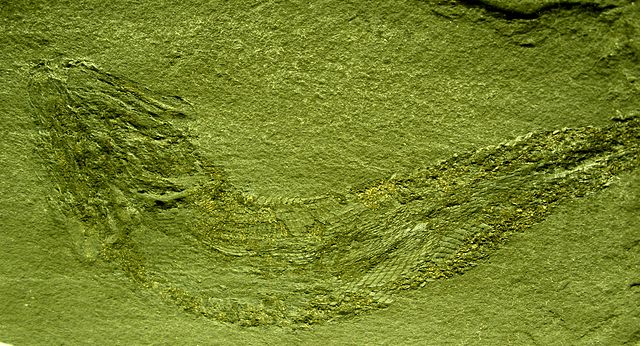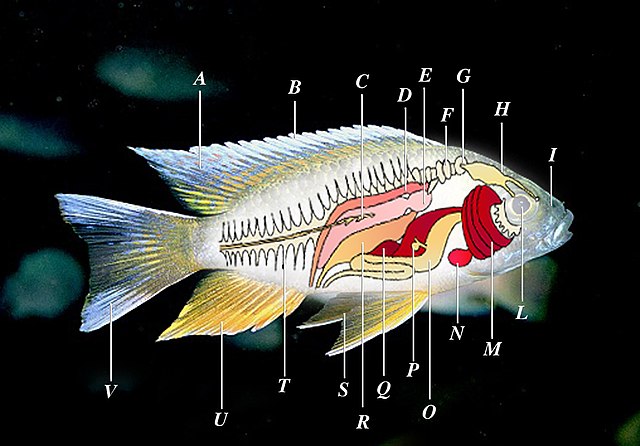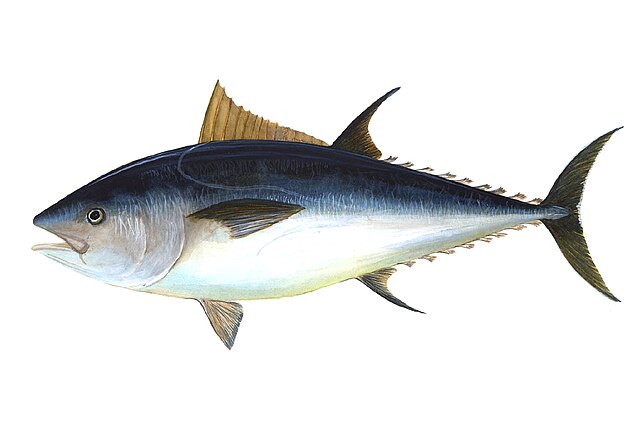Palaeoniscum is an extinct genus of ray-finned fish from the Permian period (Guadalupian-Lopingian) of England, Germany, Turkey, North America and Greenland, and possibly other regions. The genus was named Palaeoniscum in 1818 by Henri Marie Ducrotay de Blainville, but was later misspelled as Palaeoniscus by Blainville and other authors. Palaeoniscum belongs to the family Palaeoniscidae.
Palaeoniscum
Restoration of Palaeoniscum
P. vratislavensis fossil
Actinopterygii, members of which are known as ray-finned fish or actinopterygians, is a class of bony fish that comprise over 50% of living vertebrate species. They are so called because of their lightly built fins made of webbings of skin supported by radially extended thin bony spines called lepidotrichia, as opposed to the bulkier, fleshy lobed fins of the sister class Sarcopterygii. Resembling folding fans, the actinopterygian fins can easily change shape and wetted area, providing superior thrust-to-weight ratios per movement compared to sarcopterygian and chondrichthyian fins. The fin rays attach directly to the proximal or basal skeletal elements, the radials, which represent the articulation between these fins and the internal skeleton.
Actinopterygii
Anatomy of a typical ray-finned fish (cichlid) A: dorsal fin, B: fin rays, C: lateral line, D: kidney, E: swim bladder, F: Weberian apparatus, G: inner ear, H: brain, I: nostrils, L: eye, M: gills, N: heart, O: stomach, P: gall bladder, Q: spleen, R: internal sex organs (ovaries or testes), S: ventral fins, T: spine, U: anal fin, V: tail (caudal fin). Possible other parts not shown: barbels, adipose fin, external genitalia (gonopodium)
Tuna are streamlined for straight line speed with a deeply forked tail
Cod have three dorsal and two anal fins, which give them great maneuverability







